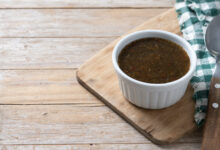The Galley
Peanut Butter Blossoms
Today’s cookies are sure to leave you and your guests coming back for more. Peanut butter blossom cookies are the quintessential homemade cookie, thus making them an instant hit for the holidays.
How could you go wrong with a cookie as a Hershey’s kiss as its centrepiece?
With our recipe, throw together a few staple pantry items and family favourites, like peanut butter and Kiss candies, and voila, you have an instant cookie classic.
PrintClassic Peanut Butter blossoms
Today’s cookies are sure to leave you and your guests coming back for more. Peanut butter blossom cookies are the quintessential homemade cookie, thus making them an instant hit for the holidays.
How could you go wrong with a cookie as a Hershey’s kiss as its centrepiece? With our recipe, throw together a few staple pantry items and family favourites, like peanut butter and Kiss candies, and voila, you have an instant cookie classic.
- Prep Time: 10+30
- Cook Time: 10
- Total Time: 0 hours
- Yield: 2 dozen
Ingredients
- 1 ¼ cups all-purpose flour
- 1/2 teaspoon baking soda
- 1/4 teaspoon salt
- 1/2 cup unsalted butter
- 3/4 cup granulated sugar
- 1/2 cup packed light brown sugar
- 1 large egg
- 3/4 cup creamy peanut butter
- 1 teaspoon pure vanilla extract
- 24 chocolate kiss candies, unwrapped
Instructions
- Whisk the flour, baking soda, and salt together. Set aside.
- Beat the butter for 1 minute on high speed until creamy.
- On medium-high speed, beat in 1/4 cup of granulated sugar and the 1/2 cup of brown sugar until completely creamed and smooth, about 2 minutes.
- Add the egg and beat on high until combined, about 1 minute.
- Scrape down the sides and bottom of the bowl as needed. Add the peanut butter and vanilla extract and mix on high until combined.
- Add the dry ingredients to the wet ingredients and mix on low until combined.
- Cover and chill the dough for at least 30 minutes in the refrigerator.
- Preheat oven to 350°F. Line two large baking sheets with parchment paper or silicone baking mats.
- Set aside. Also, make sure there is room in your freezer because they will later need to be placed inside to prevent the Kisses from melting on the warm cookies.
- Scoop and roll cookie dough, about 1 Tablespoon of dough each. Roll each ball in the remaining 1/2 cup of sugar and arrange on the baking sheet about 2 inches apart.
- Bake for 10 minutes or until the tops begin to slightly crack.
- Remove cookies from the oven and allow to cool for 10 minutes.
- Press a chocolate kiss candy into each cookie on one of the baking sheets until it sticks.
- Place the baking sheet in the freezer so the chocolate does not melt.
- Remove after 10 minutes in the freezer.



















